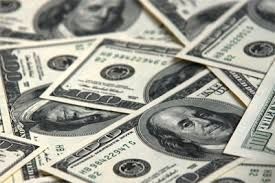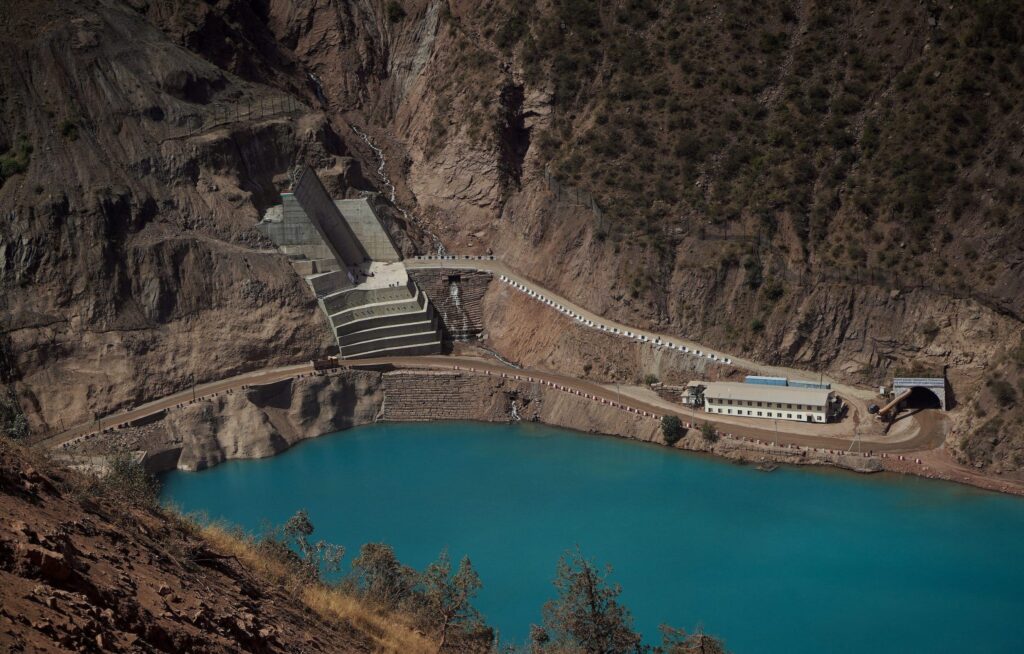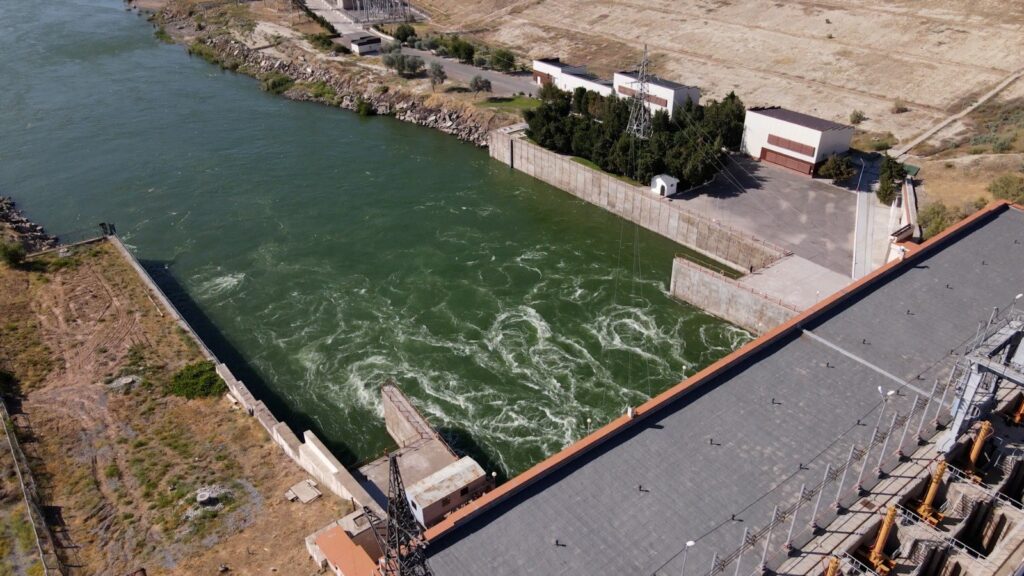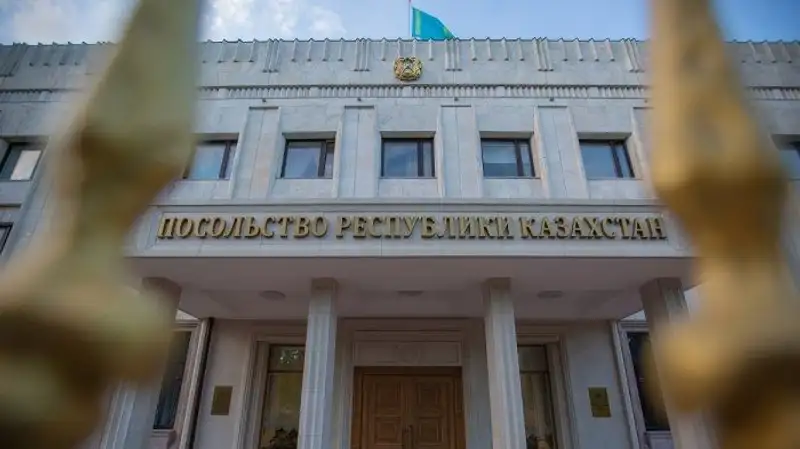BISHKEK (TCA) — The lower debt-to-GDP ratio, the better for a country’s economy. The level of external debt is among the most important competitiveness indicators, which shows how well a country copes with debt without harm to its financial system.
Kazakhstan
Kazakhstan’s external debt to GDP ratio has decreased by 8.6% compared to the beginning of 2018, Zakon.kz reports.
According to the National Bank of Kazakhstan, over the first nine months of 2018, Kazakhstan’s foreign debt was $161.5 billion, or 94% of GDP. The external debt decreased by $3 billion due to the change in all sectors of the economy that make up the structure of external debt, as well as due to the planned repayment of loans issued mainly by the Export-Import Bank of China (EximBank), Kursiv.kz reported.
Kazakhstan plans to borrow two billion yuan from China for the modernization of border checkpoints. According to Kapital.kz, as part of the agreement between the two countries, the China Eximbank will provide a soft loan to the Government of Kazakhstan for the modernization and technical re-equipping of Kazakhstan’s checkpoints located at the Kazakhstani section of the customs border of the Eurasian Economic Union, that is the border with China and Uzbekistan.
Unlike other financial organizations that provide loans ranging from 3% to 4% per annum in dollars, the Export-Import Bank of China provides a 2% soft loan in yuans for 20 years. The yuan tends to weaken, so the burden on the state budget will be noticeably lower than if the country borrows in dollars, the Finance Ministry of Kazakhstan explained.
According to kapital.kz, Finance Minister Alikhan Smailov told journalists that Kazakhstan’s debt to China is about $1.2 billion due to the loans attracted earlier under the state guarantees for the implementation of road projects, and they are currently paid.
Tajikistan
Tajikistan’s external debt was $2.9 billion, or 38.9% of GDP, at the beginning of January 2019. About 40% of the debt falls on China EximBank, to which the country owes about $1.3 billion.
According to the Ministry of Finance of Tajikistan, the first Chinese loans worth $216 million were granted to Tajikistan in 2007. In the second quarter of 2018, the country’s debt to China was about 35% of the total external debt.
The Chinese Tebian Electric Apparatus Stock Co. Ltd (TBEA) will begin to develop the Upper Kumarg gold field in the Sughd province this year. Prior to this, the company had access to the Duob gold field, also located in the Sughd province.
According to the agreements reached between the parties, the company has the right to extract precious metals from these mines until it reimburses the funds spent for the construction of the Dushanbe-2 heat and power plant, Asia-Plus reports.
The total area of the fields obtained is 15.4 square kilometers, and their proven gold reserves are 51.7 tons, and reserves to be studied are 117.16 tons.
The total cost of the Dushanbe-2 HPP built by TBEA was $349 million, of which $17.4 million was the contribution of the Tajik Government.
A large amount of Tajikistan’s external debt worth $500 million was formed due to the sale of government securities in international markets.
Tajikistan’s main creditors are China EximBank, World Bank, Asian Development Bank, Islamic Development Bank The country has relatively small debts to the Saudi Development Fund, Kuwaiti Development Fund, the Eurasian Anti-Crisis Fund, France, Germany, the European Bank for Reconstruction and Development, the European Investment Fund, and Abu Dhabi Development Fund.
Last year, Tajikistan signed 12 loan and grant agreements worth $402.6 million, 62.5% of which are grant funds.
In the next three years, Tajikistan’s Government plans to raise $776 million in foreign borrowings to develop priority areas of the national economy, including transport communications, agriculture and land reclamation, energy and industry, and healthcare.
According to studies, the volume of migrant remittances, amounting to almost 40% of Tajikistan’s GDP, makes the country economically vulnerable to external factors.
Uzbekistan
Uzbekistan’s external debt was 48% of its GDP as of January 1, 2019.
The debt increased to $16.4 billion in 2018. The debt in the public sector is growing while it is decreasing in the private sector, Gazeta Uzbekistana reports.
According to the Uzbek Economy Ministry, as of October 1, 2018, the debt had grown by 4.2% since the beginning of the year.
Uzbekistan’s state budget for 2019 was planned with a deficit of 1.1% of GDP, the Budget for Citizens bulletin informs. The deficit will be covered by loans from international financial institutions (the World Bank and the Asian Development Bank), issuance of domestic treasury bonds, and other non-inflationary sources.
Uzbekistan received loans and credits from China — 21%, Japan — 16%, Germany — 4%, ADB — 32%, WB — 16%, etc.
Uzbekistan is in the group of countries with moderate debt policy. According to Spot.uz, the sovereign debt limit is set at 40% of GDP for 2019–2021. The external public debt is planned at 21.8% of GDP in 2019, and in the next two years it should not exceed 27% of GDP.
Turkmenistan
According to various sources, Turkmenistan’s foreign debt ranges from $9 to $11.16 billion. According to the International Monetary Fund, the total debt of the public sector was 24.3% of the country’s GDP in 2017 and 27.6% in 2018.
Turkmenistan, a major natural gas producer, continues to adjust to a difficult external environment, including persistently low hydrocarbon prices and slower economic activity in trading partners, the IMF said.
The officially announced growth rate last year was 6.5% due to an increase in natural gas export volumes, import substitution, and an extensive credit policy.
In November 2009, President Gurbanguly Berdymukhamedov said that Turkmenistan is among the countries that “do not have external public debt, but on the contrary, some countries are in debt to us for the supplied Turkmen natural gas.”
Turkmenistan is among the top four countries with proven natural gas reserves. However, due to poor planning, the main source of the country’s wealth, natural gas, became the greatest obstacle to achieving sustainable growth, experts say. Due to excessive dependence on energy exports and the inability to diversify the economy, Turkmenistan is now in a very difficult economic situation.
The authorities are introducing increasingly stringent restrictions on the population but documenting specific cases is difficult in the country, Azatlyk (Freedom) Radio reported.
A recent short documentary film produced by the Alternative News of Turkmenistan informed on the growing number of people forced to make short trips to Turkey to buy goods like bread, sausage, medicine and vodka to sell them at home to make ends meet.
Azatlyk Radio also reported about the difficulties faced by the local citizens. Turkmenistan suffers from a constant shortage of key food products, and their prices are growing. In addition, the Government has raised utility tariffs.
At the end of last year, President Berdymukhamedov initiated the abolition of the system of subsidies which guaranteed large amounts of free natural gas, water and electricity to Turkmen citizens.
Kyrgyzstan
Kyrgyzstan’s public debt has decreased by $65.6 million in 2018, the Finance Ministry reported. At the end of October 2018, the state debt was about $4.4 billion (56% of GDP), of which $3.8 billion was the external public debt.
Russia wrote off $240 million of Kyrgyzstan’ debt at the beginning of 2018.
At the end of 2017, the country’s public debt exceeded $4.5 billion. Kyrgyzstan owes mainly to China EximBank — more than $1.7 billion (44.9% of the foreign debt).
According to the state budget for 2019 and budget forecast for 2020-2021, Kyrgyzstan plans to spend 28.3 billion soms to service its public debt. This is almost a fifth of the state budget revenues.
Debt payments are increasing every year, from 20.6 billion soms in 2018 to 36.5 billion in 2021, according to the forecast.
Kyrgyzstan’s Government and Parliament deputies proposed to limit the debt-to-GDP ratio by 70%. For a country with a weak economy, the growth of external debt to GDP is quite dangerous. “At least we will start to think before taking loans,” the bill’s authors believe.
In addition, they plan to introduce a rule that the share of borrowing from a single lender should not exceed 50% of the entire national debt. The introduction of restrictions is necessary to maintain the national security, the bill’s authors added.
Nobody will forgive the debts to Kyrgyzstan, therefore the State has no choice but to provide the necessary amount every year. Where will the Government get this money? Economic expert Iskender Sharsheev told Vesti.kg that it is possible to cope with growing payments if the state budget expenditures are reduced by 30-40%.
Kyrgyzstan can apply the experience of the US, Canada, Scandinavian countries, and Russia in cutting extra budgetary spending.
To collect more taxes, Kyrgyzstan should strengthen its economy. If half of the current shadow economy is legal, then GDP could increase significantly, experts say.
In many developed countries, the national debt far exceeds the GDP. For example, Japan’s national debt is 200% of GDP, in Italy it is 133%, in Belgium 104%, and in Austria more than 80%.









